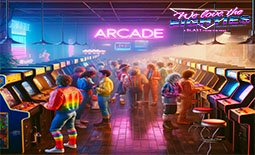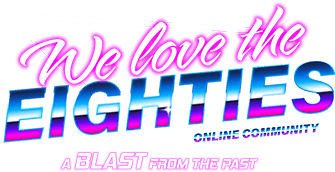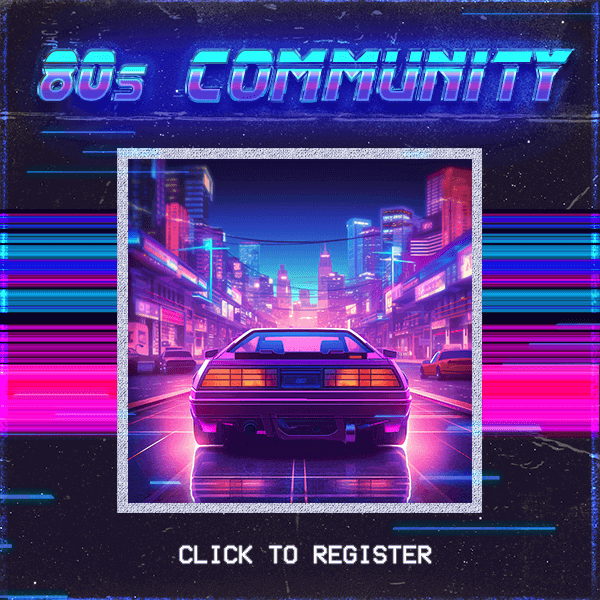Navigation
Install the app
How to install the app on iOS
Follow along with the video below to see how to install our site as a web app on your home screen.

Note: this_feature_currently_requires_accessing_site_using_safari
More options
You are using an out of date browser. It may not display this or other websites correctly.
You should upgrade or use an alternative browser.
You should upgrade or use an alternative browser.
galaga
Hey!
Welcome to We love the Eighties Community! We’re thrilled you’ve stopped by our ’80s paradise. 🌟 Here, we celebrate all things ’80s – from iconic music, movies, fashion, to the vibrant culture that defined a generation! Feel free to introduce yourself and start exploring the threads. Don’t hesitate to share your thoughts, memories, or even your latest ‘80s finds! We’re excited to have you join our vibrant community. Join us to connect with fellow enthusiasts, share your favorite memories, and dive into engaging discussions that bring the nostalgia of the ‘80s to life. Whether you’re a die-hard fan or just curious about this dynamic era, you’ll find a home here.
Galaga is a 1981 fixed shooter arcade video game developed and published by Namco. In North America, it was released by Midway Manufacturing. It is the sequel to Galaxian (1979), Namco's first major video game hit in arcades. Controlling a starship, the player is tasked with destroying the Galaga forces in each stage while avoiding enemies and projectiles. Some enemies can capture a player's ship via a tractor beam, which can be rescued to transform the player into a "dual fighter" with additional firepower.
Shigeru Yokoyama led development with a small team. Initial planning took about two months to finish. Originally developed for the Namco Galaxian arcade board, it was instead shifted to a new system as suggested by Namco's Research and Development division. Inspiration for the dual fighter mechanic was taken from a film that Yokoyama had seen prior to development, where a ship was captured using a large circular beam. The project became immensely popular around the company, with Namco's president Masaya Nakamura even taking interest.
Although early location tests were unsuccessful, Galaga received critical acclaim and went on to become one of the most successful arcade games, routinely appearing on Japanese and American arcade charts through 1987. It is widely regarded as a classic of the golden age of arcade video games and one of the greatest video games of all time. Critics applauded its gameplay, innovation, addictive nature and improvements made over its predecessor. Several home ports were released for a multitude of platforms, including the MSX, Atari 7800 and Nintendo Entertainment System, alongside releases on digital distribution platforms such as Xbox Live Arcade. Galaga is also included in many Namco compilations. It was followed by a sequel in 1984, Gaplus.
View More On Wikipedia.org
Shigeru Yokoyama led development with a small team. Initial planning took about two months to finish. Originally developed for the Namco Galaxian arcade board, it was instead shifted to a new system as suggested by Namco's Research and Development division. Inspiration for the dual fighter mechanic was taken from a film that Yokoyama had seen prior to development, where a ship was captured using a large circular beam. The project became immensely popular around the company, with Namco's president Masaya Nakamura even taking interest.
Although early location tests were unsuccessful, Galaga received critical acclaim and went on to become one of the most successful arcade games, routinely appearing on Japanese and American arcade charts through 1987. It is widely regarded as a classic of the golden age of arcade video games and one of the greatest video games of all time. Critics applauded its gameplay, innovation, addictive nature and improvements made over its predecessor. Several home ports were released for a multitude of platforms, including the MSX, Atari 7800 and Nintendo Entertainment System, alongside releases on digital distribution platforms such as Xbox Live Arcade. Galaga is also included in many Namco compilations. It was followed by a sequel in 1984, Gaplus.
View More On Wikipedia.org
-
B
A Journey Through The Golden Age of Arcade Games
This thread is for the general discussion of the Article A Journey Through The Golden Age of Arcade Games. Please add to the discussion here.- Brad Bartlett
- Thread
- 80s arcade 80s video games donkey kong double dragon galaga pac-man pong space invaders
- Replies: 1
- Forum: The 80s Lounge
-

A Journey Through The Golden Age of Arcade Games
A Journey Through The Golden Age of Arcade Games If you were lucky enough to experience the heady days of the late '70s and the '80s in an arcade, you'd know it was not just about gaming. It was a cultural phenomenon—a rite of passage for many. Arcades weren't merely dim-lit rooms filled...- Brad Bartlett
- Article
- 4 min read
- 80s arcade 80s video games donkey kong double dragon galaga pac-man pong space invaders
- Category: 80s Entertainment

